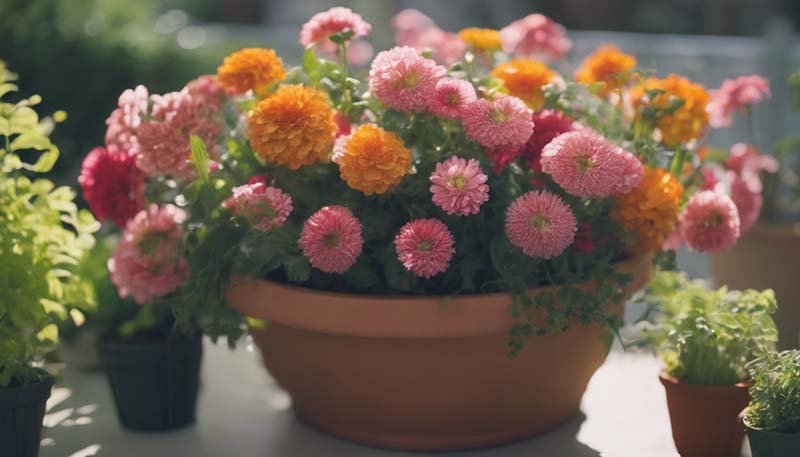Creating a Seasonal Flower Container Garden
Maintenance | 2024-03-09
Creating a Seasonal Flower Container Garden
Container gardening is a delightful way to enjoy the beauty of flowers without the need for a large outdoor space. It allows for creativity, flexibility, and the joy of having a garden that can be moved and changed with the seasons. In this article, we'll explore how to create a seasonal flower container garden that will bring color and life to your surroundings all year round.
Understanding the Seasons
Before you begin, it's important to understand the climate in your area and how it affects plant growth. Each season brings different weather conditions that influence the types of flowers you can grow. Consider the following when planning your container garden:
- Spring: Warming temperatures and longer days encourage growth. Look for early bloomers that can tolerate slightly cooler weather.
- Summer: Hot and dry or humid, depending on your location. Choose heat-loving, drought-resistant plants.
- Fall: Mild temperatures are ideal for many flowers. Consider plants with vibrant autumn colors.
- Winter: Cold and sometimes snowy. Opt for winter-hardy or indoor plants if you wish to maintain a container garden.
Choosing the Right Containers
The choice of container is as important as the plants you choose. Containers come in various materials, shapes, and sizes. Consider the following factors:
Advertisement
- Drainage: Ensure your container has drainage holes to prevent root rot.
- Material: Materials like ceramic, terracotta, and fiberglass are popular choices due to their durability and aesthetic appeal.
- Size: Larger containers hold more soil and moisture, which can be beneficial for plants during hot or dry periods.
- Aesthetics: Choose a container that complements your home's exterior and the surrounding area.
Selecting the Plants
The key to a successful seasonal container garden is selecting plants that are well-suited to the time of year. Here are some suggestions for each season:
Spring
- Pansies
- Primrose
- Daffodils
- Tulips
Summer
- Petunias
- Marigolds
- Lantana
- Coleus
Fall
- Mums
- Aster
- Celosia
- Kale
Winter
- Cyclamen
- Winter Jasmine
- Ivy
- Boxwood
Designing the Container
When arranging your flowers, think about height, color, and texture. A well-designed container garden has visual interest from all angles. Here are some design tips:
- Layering: Place taller plants in the center and gradually decrease in height as you move outward.
- Color Scheme: Choose a color theme for a cohesive look or mix and match for a more eclectic style.
- Texture: Combine plants with different leaf and flower textures to add depth and interest.
- Thematic: Consider a theme, such as a cottage garden, tropical paradise, or desert landscape.
Caring for Your Container Garden
Proper care is essential for the health and longevity of your container garden. Here are some care tips:
- Watering: Containers dry out faster than in-ground plants. Check the soil moisture daily and water as needed.
- Fertilizing: Use a balanced, water-soluble fertilizer every two to four weeks during the growing season.
- Pruning: Regularly remove dead or yellowing leaves and spent flowers to encourage new growth.
- Repotting: Some plants may need to be repotted into larger containers as they grow.
Transitioning Seasons
As the seasons change, so should your container garden. Here's what to do as the weather shifts:

- Spring to Summer: Swap out cool-season plants for heat-tolerant varieties.
- Summer to Fall: Introduce more autumnal colors and replace any plants that are past their prime.
- Fall to Winter: Gradually replace warm-season plants with cold-hardy or indoor varieties.
- Winter to Spring: Start with perennials and early bloomers that can handle the last chill of winter.
Conclusion
Creating a seasonal flower container garden is a rewarding and dynamic way to engage with nature. With careful planning, selection, and maintenance, your garden can be a source of joy and inspiration throughout the changing seasons.
Comments